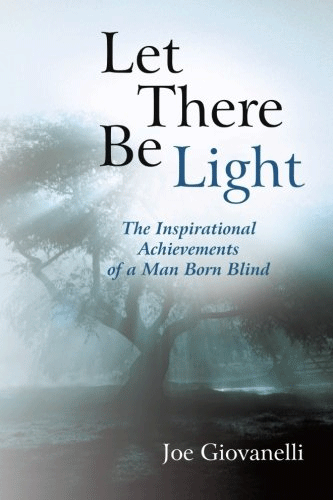
In the classics, long paragraphs were desirable. At one time, English teachers said a topic sentence should begin a paragraph, followed by several more, as if we hadn’t really achieved literary excellence until we had learned to create paragraphs that covered half the page.
Now, we love the white space that lets us capture separate, distinct images every time we sense a shift in the point of focus.
See if you can find where those shifts might take place in the single paragraph from Let There be Light by Joe Giovanelli.
She asked about my life. I told her bits and pieces while we held hands. She sensed that this was something very important to me. I told her more than I wanted to. She was so kind and understanding and I needed understanding. Could she possibly ever hold me? I said just a little about that and it didn’t seem to bother her. She was, and is, a truly wonderful friend. She has a car and drives me to places which I otherwise could not go. I loved walking as did she, so we began walking, increasing our endurance until we could easily walk two and a half miles a day at a brisk pace.
Look at the revised text broken into many paragraphs. Most of today’s readers prefer the new style with lots of white space.
She asked about my life.
I told her bits and pieces while we held hands.
She sensed that this was something very important to me.
I told her more than I wanted to. She was so kind and understanding and I needed understanding. Could she possibly ever hold me? I said just a little about that, and it didn’t seem to bother her.
She was a truly wonderful friend. She had a car and drove me to places where I otherwise could not go.
I loved walking as did she, so we began walking, increasing our endurance until we could easily walk two and a half miles a day at a brisk pace.
Logic behind the changes:
- “She asked” is one point of focus. “I told her” begins a new focus.
- “She sensed” shifts focus again, taking us from “I” to “she.”
- With “I told her,” we are focused back on Joe, who is telling his story. Here we can have a paragraph with three sentences that use both “I” and “she,” which center on his thoughts about her.
- “She was a truly wonderful friend” is a conclusion about the person, a new thought that justifies a new paragraph.
- “I loved walking” shows a result from the personal interaction, a new topic that should begin another paragraph.





 Character is a critical key to becoming a person of quality, and it starts in the home!
Character is a critical key to becoming a person of quality, and it starts in the home!